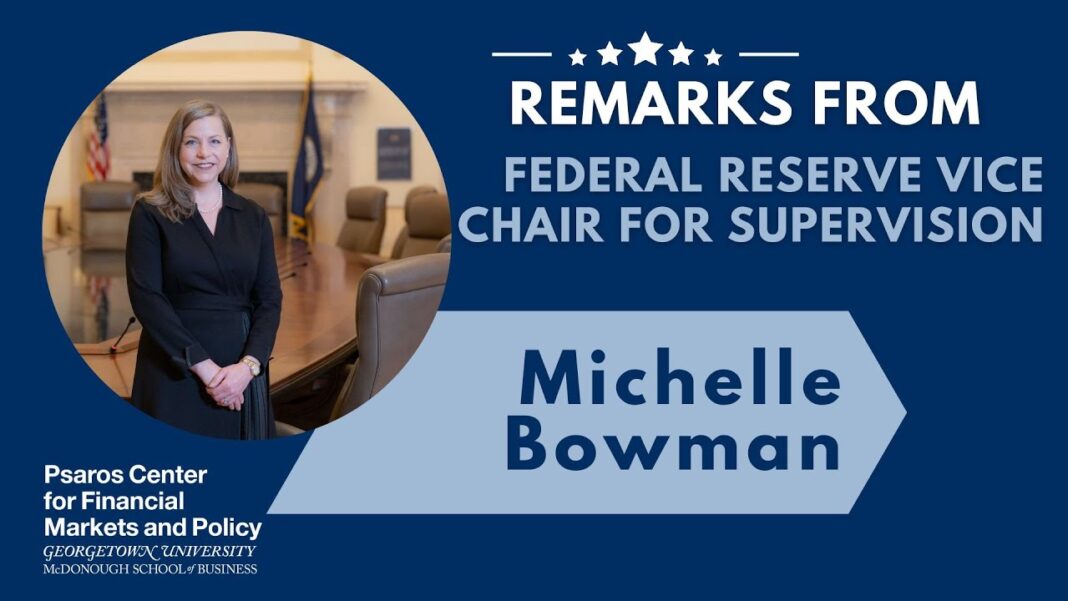Commentary
Earlier this month, in her first public speech as the Federal Reserve’s Vice Chair for Supervision, Michelle Bowman laid out her vision for how the central bank should oversee and regulate US banks. At the heart of her approach is pragmatism: identifying problems, crafting efficient solutions, analyzing both intended and unintended consequences, and considering alternative approaches that might produce better results at lower cost.
Bowman outlined how her pragmatic approach can improve the Fed’s oversight of the banking system. She focused on four key areas:
- Enhanced Supervision: Enhancing supervision to better achieve the Fed’s safety and soundness goals;
- Bank Capital: Reforming the capital framework to ensure it aligns with the structure of the US banking system;
- Regulatory Review: Reviewing existing regulations to ensure the framework remains viable; and
- Bank Applications: Making the application process more transparent, predictable, and fair.
Enhancing Supervision
Bowman identified five changes the Fed could adopt to better focus supervision on material financial risks that threaten the stability of the banking system—and to ensure those risks are addressed promptly.
The first change she proposed was applying a more tailored regulatory and supervisory approach. As she explained, the Fed has historically “‘pushed down’ requirements developed for the largest firms to smaller banks, often including regional and community banks,” which has led to “the gradual erosion of distinct regulatory and supervisory standards among firms with very different characteristics.” As a result, smaller, community-focused banks are increasingly subject to rules designed for the largest and most complex institutions that are often ill-suited to their specific circumstances.
The second change Bowman proposed was reforming the supervisory ratings system. This reform would be aimed at addressing “the gap between assessed ratings and material financial risk.” For example, recent data showed that two-thirds of the nation’s largest banks were rated unsatisfactory, even though most met the Fed’s capital and liquidity expectations. In short, she argued, the current system fails to accurately reflect the financial condition of the institutions the Fed supervises.
Third, Bowman raised concerns about examiner priorities. She argued that “supervisory focus has shifted away from core financial risks (credit risk, interest rate risk, and liquidity risk, for example), to process-related concerns. She called for a shift in focus back to these substantive areas. Bowman also criticized the tendency among examiners to assume that more complex practices are inherently superior and to hold all banks to those standards—even when simpler approaches may be more appropriate for a bank’s size, scope, or risk profile. Echoing her earlier support for regulatory tailoring, she stressed the need for greater transparency in examination outcomes and emphasized that banks should be evaluated based on their individual circumstances.







